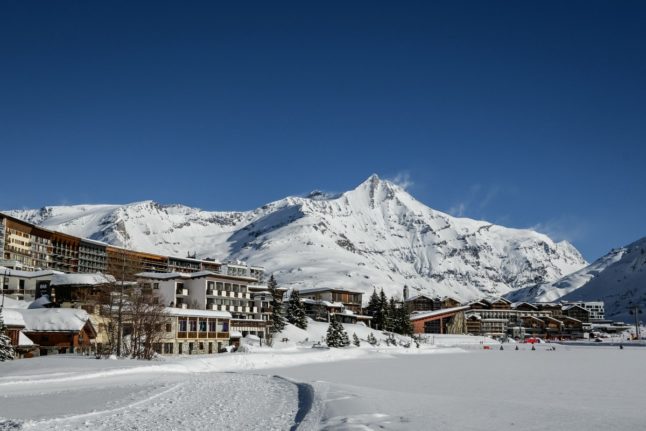The first wave of school holidays have already begun in France, and this weekend holidays start for Zone C (Créteil, Montpellier, Paris, Toulouse and Versailles) while Zone A (Besançon, Bordeaux, Clermont-Ferrand, Dijon, Grenoble, Limoges, Lyon and Poitiers) enjoy their second week of holidays.
Meanwhile, those in Zone B (Aix-Marseille, Amiens, Lille, Nancy-Metz, Nantes, Nice, Normandie, Orléans-Tours, Reims, Rennes and Strasbourg) have to wait until February 24th before they break up.
The reason for the staggered February holidays? It’s to allow ski resorts to maximise the peak school holiday times.
The holiday period usually prompts something of a stampede towards popular ski resorts – both from within France and from foreign tourists.
But the relatively mild weather has sparked concern about a lack of snow at popular resorts, especially those at lower altitudes. So, will there be snow at the ski resorts this month?
Alps
Despite a cold spell, average January temperatures were slightly above normal, according to Météo France.
Generally snow cover in the Alps was considered to be “in good supply above 2,400m, but significantly less at lower altitudes”, according to reporting by 20 Minutes this week.
You can see a live report of the snow status of the northern Alps on the Météo France website.
Resorts above 2,000m have had enough snow to keep runs open, while lower-altitude resorts have had to turn to other outdoor activities due to a lack of snow.
For example, the Mont Blanc area (at 2,000m) had over 190cm of snow as of February 13th.
Temperatures across France were expected to remain slightly above seasonal norms during the week beginning February 19th.
La Chaîne Météo predicts rain at lower altitudes, with some snow at medium and higher altitudes.
Further south, the snow level in the Southern Alps region was 47 percent of normal on February 13th, with a forecast for the next week very similar to that of the northern Alps.
South-eastern regions had less than 15cm of snow at 1,500m, rising up to 120-130cm at 2,000m in the Champsaur and Pelvoux areas. You can see the snow status here.
Pyrenees
The news at the start of the month was far from promising. Snow levels in the Pyrenees on February 1st were the lowest in 24 years, with popular resorts such as Luchon-Superbagnères, Ax 3 domaine, Font-Romeu-Les Angles, Peyragudes and those in Andorra enduring milder conditions that they would have hoped for.
After some snow at the weekend, the rest of the week was expected to remain mild, with almost spring-like weather and some rain, according to the La Chaîne Météo bulletin for the week beginning February 19th.
Jura
The Transjurassienne 2024 cross-country race, scheduled for the weekend of February 10th and 11th, was cancelled because of a lack of snow.
“Due to the low snowfall on the Jura massif, between Lamoura and Val de Mouthe, and given the mild weather forecast, we had to make this difficult decision,” race organisers said in a press release.
Some resorts, such as Métabief, Doubs, have stayed partially open thanks to artificial snow.
Massif Central and Vosges
The lower altitude massifs, including the Massif Central and the Vosges had virtually no natural snow as of February 13th, with a maximum of 10cm in the Massif Central at 1,500m. This dropped down to just 2cm at 1,200m for the Vosges.
Next week is expected to be windy and rainy, especially in the Vosges.
La Chaîne Météo advised that holidaymakers “plan indoor activities for the rainy days.”
In Suber-Besse, the second largest ski resort in the Massif Central, eight slopes were open during the first weekend of February, marking only a third of their total ski area. This was only thanks to the artificial snow, as temperatures had risen up to 15C at 1,300m.
February predictions
Despite some snowfall predicted for the weekend, longer forecasts suggest that February is likely to be another mild one, as the prospect of a long spell of cold in the shortest month of the year recedes.
L'évolution #météo pour la semaine prochaine semble désormais se confirmer en faveur d'un temps assez calme et plutôt doux. La perspective du #froid s'éloigne progressivement. Le mois de février sera probablement plutôt doux dans l'ensemble 🌡️ pic.twitter.com/cIzyrpHcJA
— La Chaîne Météo (@lachainemeteo) February 7, 2024
Webcams
If you have a trip booked, you can check in advance the snow level at your resort’s website or by looking it up on Météo France.
Ski resorts routinely update their websites with the latest snow reports – and many include webcams that show current weather conditions. It’s a good idea to check those out to decide whether you need your skis or your hiking boots before you head off on holiday this month.
You’ll likely still be going – there are virtually no travel insurance policies that allow you to cancel a trip due to lack of snow, even those that advertise ‘snow cover’ usually just provide you with a few euro to cover the cost of travelling to another resort that does have snow.



 Please whitelist us to continue reading.
Please whitelist us to continue reading.
Over in Haute-Savoie we have good – if not outstanding snow in the Portes de Soleil (Morzine-Les Gets-Avoriaz-Champery) – Europe’s biggest ski resort.
If you head high – and follow the Piste X Code (a new bilingual safety initiative launched in Morzine) you should have a great time! https://pistexcode.org/